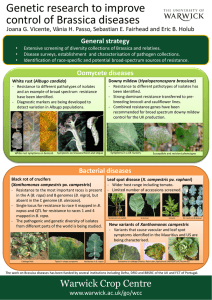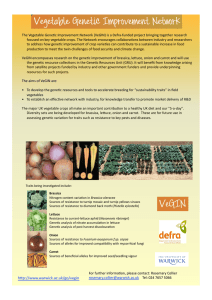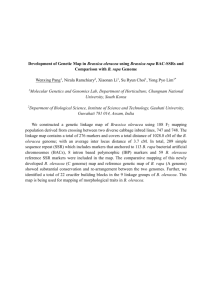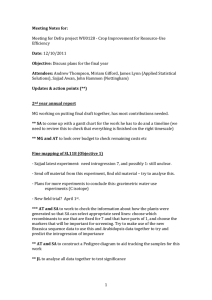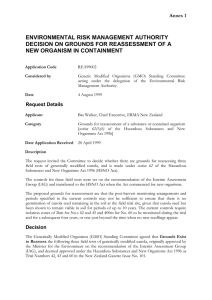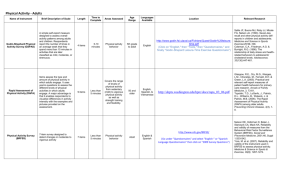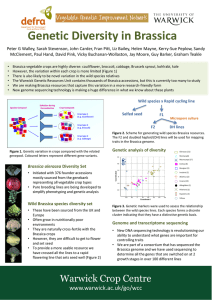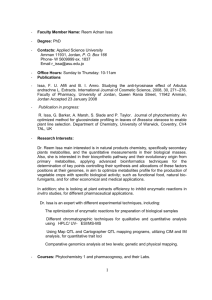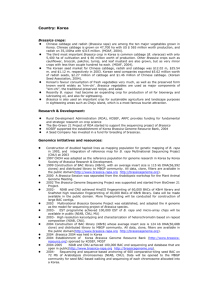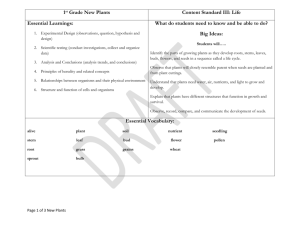Gene specific SNP markers development for glucosinolate pathway
advertisement
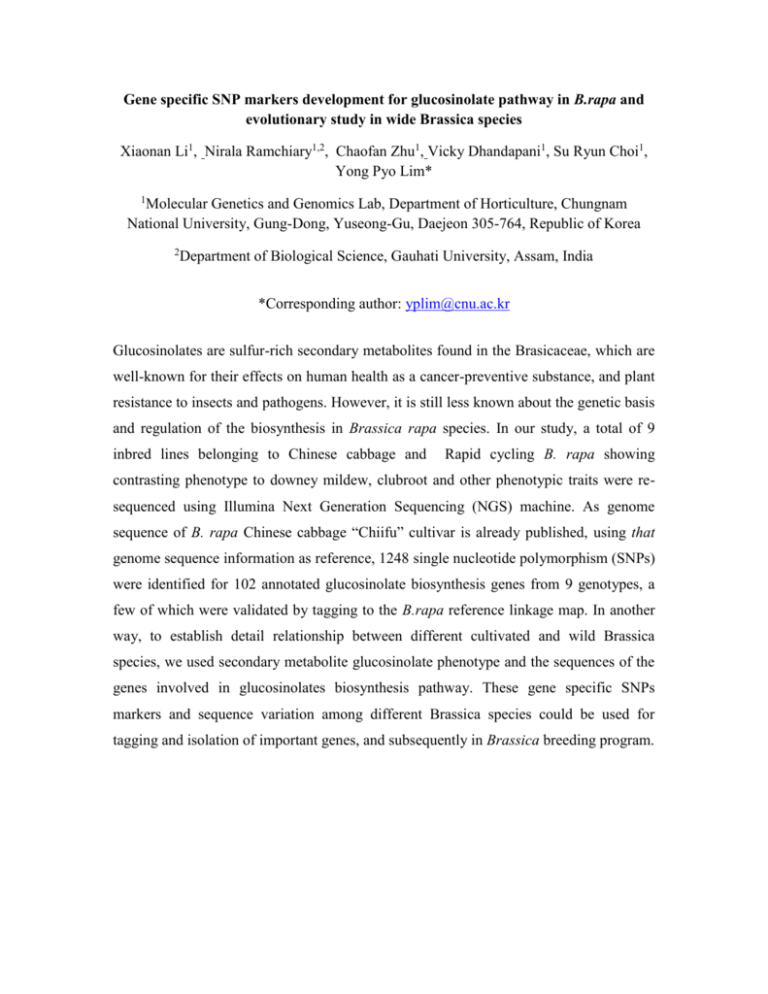
Gene specific SNP markers development for glucosinolate pathway in B.rapa and evolutionary study in wide Brassica species Xiaonan Li1, Nirala Ramchiary1,2, Chaofan Zhu1, Vicky Dhandapani1, Su Ryun Choi1, Yong Pyo Lim* 1 Molecular Genetics and Genomics Lab, Department of Horticulture, Chungnam National University, Gung-Dong, Yuseong-Gu, Daejeon 305-764, Republic of Korea 2 Department of Biological Science, Gauhati University, Assam, India *Corresponding author: yplim@cnu.ac.kr Glucosinolates are sulfur-rich secondary metabolites found in the Brasicaceae, which are well-known for their effects on human health as a cancer-preventive substance, and plant resistance to insects and pathogens. However, it is still less known about the genetic basis and regulation of the biosynthesis in Brassica rapa species. In our study, a total of 9 inbred lines belonging to Chinese cabbage and Rapid cycling B. rapa showing contrasting phenotype to downey mildew, clubroot and other phenotypic traits were resequenced using Illumina Next Generation Sequencing (NGS) machine. As genome sequence of B. rapa Chinese cabbage “Chiifu” cultivar is already published, using that genome sequence information as reference, 1248 single nucleotide polymorphism (SNPs) were identified for 102 annotated glucosinolate biosynthesis genes from 9 genotypes, a few of which were validated by tagging to the B.rapa reference linkage map. In another way, to establish detail relationship between different cultivated and wild Brassica species, we used secondary metabolite glucosinolate phenotype and the sequences of the genes involved in glucosinolates biosynthesis pathway. These gene specific SNPs markers and sequence variation among different Brassica species could be used for tagging and isolation of important genes, and subsequently in Brassica breeding program.

